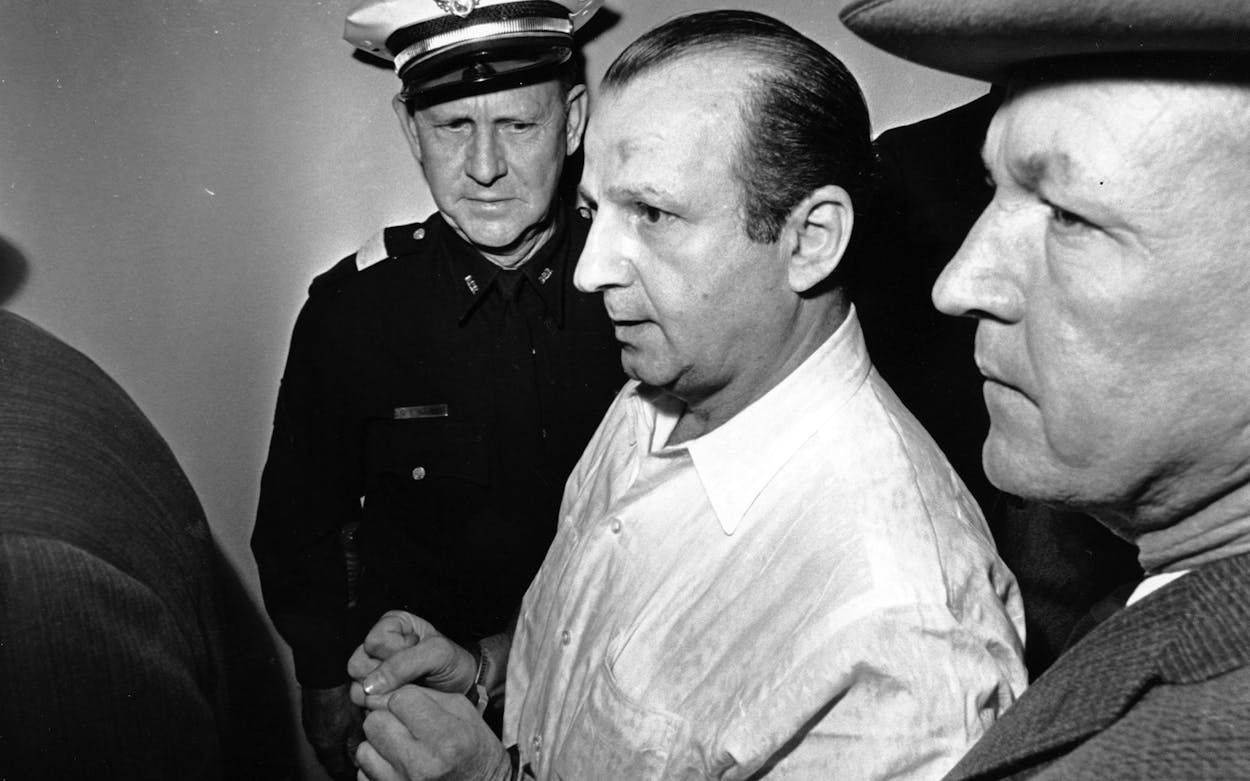Fifty years after dying in prison of an embolism, Jack Ruby remains one of the most enigmatic figures in American history. Did he kill Lee Harvey Oswald out of a sense of distraught patriotism stemming from his despair over the assassination of John F. Kennedy, as the Warren Commission found? Or was he tying up a major loose end in a conspiracy by ensuring that Oswald wouldn’t be able to tell the world what really happened? We’ll never know for sure, but half a century later, the questions remain no less compelling.
One place you’re unlikely to find any firm answers is in the 24-page manuscript Ruby wrote by hand while in prison, detailing the days leading up to the murder of Oswald. That document, which goes to auction later this month, doesn’t contain any bombshells indicating that Ruby was acting at the behest of powerful forces who sought to have the president removed. Nonetheless, it’s only the third time the diary has come to auction, after Ruby’s brother, Earl, claimed it from officials. According to the Dallas Morning News, it sold for an undisclosed price in 1992, and then for $11,000 in 2008.
That’s a fine price for a piece of Kennedy memorabilia, but the going rate for such items can vary wildly. The auctioneer selling Ruby’s diary, RR Auctions, has experience in selling artifacts related to the 35th President of the United States. In 2013, the organization sold more than 200 items as part of its anniversary auction. Ruby’s diary wasn’t among them at the time, but had it fetched $11,000 at the auction, it’d have been among the pricier items there, between a signed campaign photo of Kennedy ($12,000) and Ruby’s official mugshot from the Dallas Police Department ($10,800). (It wouldn’t come anywhere near the top end items, like the white 1963 Lincoln Continental that carried Kennedy and the first lady from Fort Worth on the morning of his assassination, which sold for $318,000, or his presidential limo, which sold for $210,000.)
Kennedy-themed items tend to slot into a few different categories: There are those that capture a fully unique piece of history, like Ruby’s diary, Oswald’s rifle scorebook from his days in the U.S. Marine Corps, or signed appointments from Kennedy to judges and ambassadors. Others have value as items unto themselves, like cars, jewelry (Oswald’s wedding ring sold for over $100,000), and Jackie Kennedy’s clothing (a black velvet outfit worn by the first lady sold for $39,600). And then there are the more budget-oriented items requiring a bit more explanation when on display, like JFK Jr.’s baby shirt, or a Nieman Marcus sportcoat once owned by Jack Ruby (both of which sold for less than $700).
Digging through the items that have come up for auction in the past, you can find some confirming whatever theories you may have. The Ruby manuscript going up for auction this month was written sometime after his initial conviction for murder in March 1964, though it’s unclear if there’s a date on the letter. However, by 1965, Ruby was penning letters indicating that he didn’t believe that Oswald acted alone—in a jailhouse letter that sold in 2013 for $4,800, Ruby indicated his belief that Lyndon B. Johnson was the mastermind behind the shooting. (Alas, Ruby’s letter contains only speculation—he still maintains that he himself acted alone as he laments empowering Johnson, whom he calls a “Nazi.”)
Those who want to own a unique piece of history with a smaller checkbook can find bargains, depending on where they look. RR Auctions’ items tend to attract those with deep-pockets, but prices at other bidding houses can vary wildly. One auction, from auctioneer Guernsey’s and sold via collectibles website Invaluable last month, offered several unique items at prices well below estimates. Those who wanted a shot at boating like a Kennedy could have done so in his restored 1961 Century Resorter speedboat, which sold for $75,000, well under the auctioneer’s estimate of $100-150,000. Meanwhile, well-wishers with a love of history could have sent their Christmas greetings out on Jackie Kennedy’s own stationery, personally monogrammed and selling for just $100 for twenty sheets.
All of this is a fascinating reminder of the proximity we still bear to history when it comes to the Kennedy era and its artifacts. Preservation techniques were much more sophisticated than they were in earlier events in our nation’s history; so, too, was our sense of capturing the significance of history as it unfolded. Items like the coin flipped by Kennedy at the 1962 Army-Navy game were preserved, confirmed to be authentic, and stored alongside untorn game-day tickets, so they could be sold at auction half a century later for $700.
It’ll be decades before Kennedy eventually fades from living memory. But because the abundance of artifacts means appreciators of history can claim them at auction for a low price, Kennedy’s hold on popular memory will endure even longer.








